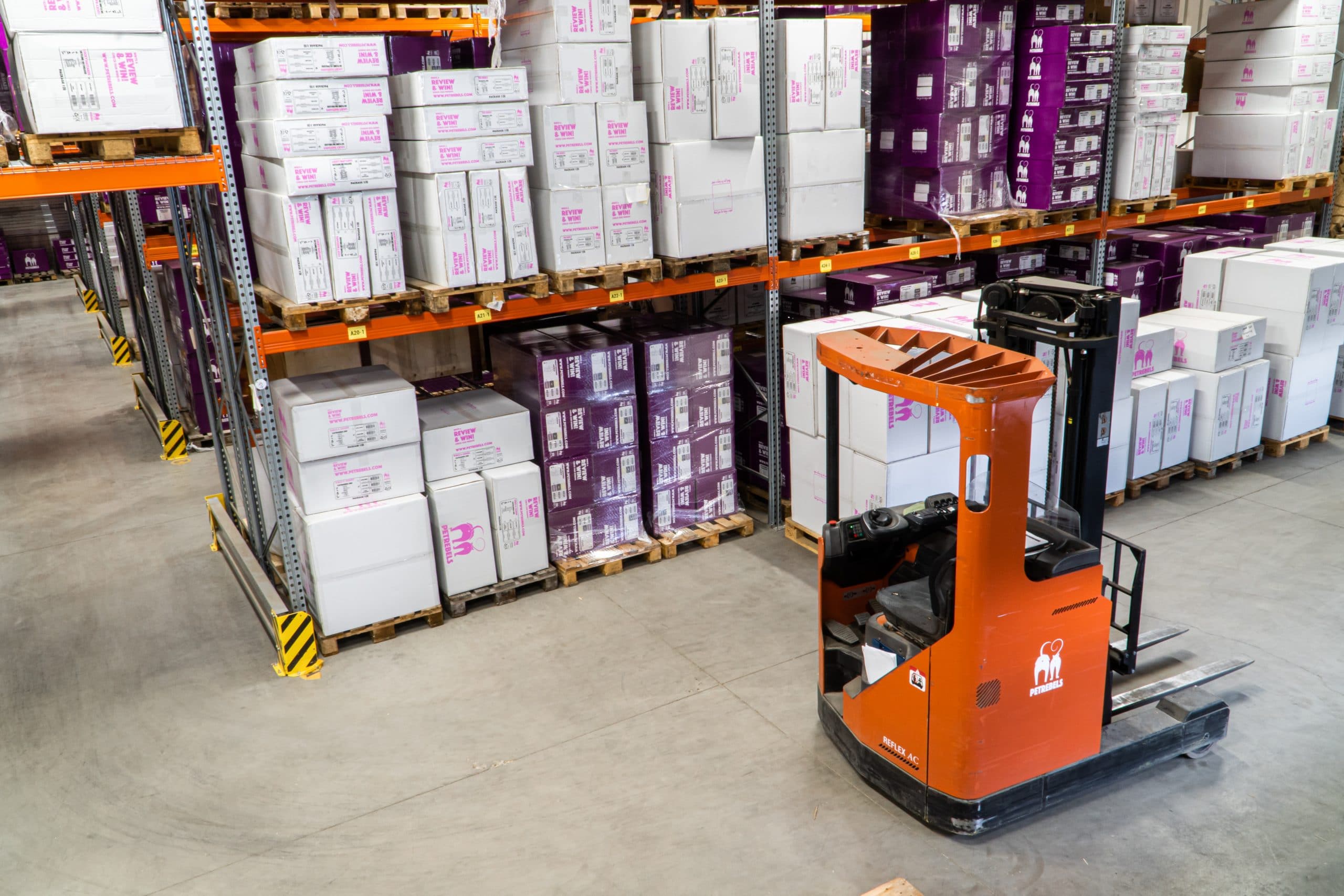
How to improve inventory management: 6 best practices
Modern businesses go to any lengths not only to keep their nose above water but to expand and flourish as far as it is possible in the context of pervasive globalization and the post-COVID next normal. They try to reach out to the maximum number of consumers, hold robust marketing campaigns, advertise through multiple channels, conduct training and workshops to enhance personnel productivity, and cut down on needless expenditures. Among all mission-critical measures aimed at boosting the company’s efficiency, there is one that competent CEOs have no right to neglect. We are talking about improving inventory management. In this article, you will learn how to improve inventory management, including some recommendations on software solutions.
Inventory management: What is it?
Conventionally, when we hear the word “inventory,” we imagine a warehouse where an enterprise keeps the products it manufactured to be further sold wholesale or retail and delivered to end consumers or vendors who will speed them as middlemen on the way to customers. Being true as a general picture, this vision lacks a number of details, though.
For once, inventory may contain some intangible goods your company produces (for instance, software) and is thus found only in virtual depots. Then, the imaginary warehouse may contain not only items ready for sale. Its shelves can house raw materials that you bought to make the production of your organization, unfinished goods that are halfway through the process of manufacture, or maintenance, repair, and operating goods (aka MRO (maintenance, repair, and operation items) that are necessary to keep the production routine going. Besides, many enterprises have an emergency stock meant to stand them in good stead in case of unexpected demand spikes or temporary supply chain suspensions.

What are the major problems inventory can run into?
The first is overstocking. If you have produced more items than clients need, you will require additional storage space to accommodate them and defray related expenses. In case the goods are perishable items (like foodstuffs or flowers), you can lose a fair share of them if the warehouse conditions are inadequate for prolonged storage. The same is true about raw materials that you can’t process within a short time.
The second is the opposite – understocking. You have miscalculated the produce for further delivery and have nothing to offer to the disgruntled customers fuming at your front door and having much to say about your company’s reliability as a business partner. This underestimation may relate to raw materials or MRO goods. Then, instead of disappointed customers, you will have a bunch of annoyed employees whose regular workflow meets a hiatus.
Both problems grow exponentially as the size of your organization increases and spell not only financial losses but also tons of wasted labor that has to be directed to get the company out of the mess. Inventory control management can help you avoid such emergencies. It includes a set of procedures that enable you to take care of your inventory and ensure an uninterrupted flow of goods. By the book, it should cover all essential stages of inventory handling.
Stages of inventory management
- Purchasing. You must keep track of the inflow of raw materials for your products or items you will further sell.
- Manufacturing. This is about the quantity of products your organization has made (irrelevant for companies involved only in sales).
- Storing. This is the pivotal phase of inventory management that is responsible for hoarding raw materials and finished items.
- Sales. This is when the products change hands, and the seller gets payment for them.
- Reporting. At this stage, the dossiers on the amounts of sales and payments are compiled and processed.
In addition to tracking the current inventory flow, the best ways to manage inventory include forecasting demand so that you know what customers want.
Alongside inventory management, there is one more term – inventory control. It has a narrower meaning and applies only to the storing phase of inventory handling, leaving purchasing, manufacturing, selling, and reporting tasks out of its ken. The success of the inventory control policy depends on the accountability of your stocks. The employees responsible for it should have all related data at their fingertips. So, they will know how much stock is available, where it is kept, and what the state of it is.
Whether it is inventory control only or the entire system of inventory management, both of them need constant care to reinforce their efficiency. Companies that do report over 75% revenue growth, a two-thirds profit margin increase, and a 61% rise in customer loyalty. Given such numbers, it is wise to take a closer look at how businesses augment their inventory management techniques.
6 ways to improve your inventory management
Here are some inventory management best practices retail and wholesale ventures use to take it to a new level.
Way 1 — Fathom your supply chain
Before a certain item appears on the shelves of your warehouse, it goes through a number of steps. First, you should order it, and the supplier is to affirm they have the product in the necessary quantity. Then, you pay the total price or an advance sum for it. Then, you wait for the goods. When they arrive, they are registered in the inventory logs.
If any cog of this well-geared mechanism stops spinning, the whole chain is in trouble. Of course, you can’t predict all pitfalls that can waylay your product end route. But clearly envisaging the product’s progress is what you need to figure out likely bottlenecks and cushion possible blows, minimizing risks.
Way 2 — Establish safety stock and minimum stock levels
The crucial question that all employees dealing with inventory management confront is, “How much is enough?”
Often, it is a ticklish business to balance between the risks of running out of stock and the equally unpleasant prospect of unsold items taking storage room and gathering dust on the warehouse shelf.
To address the problem, you should figure out and closely watch safety stock and minimum stock indices. The former is the additional number of items you need to be on the safe side. The latter is also known as the reorder point formula, which will enable you to order and receive a new batch before the current one is depleted. It should take into account both the quantity of remaining items and the time needed to replenish the existing inventory.
Way 3 — Get to grips with bulk shipment and EOQ
Both methods can optimize delivery costs. Bulk shipment presupposes palletizing items so that carriers can transport greater quantities in one go. EOQ stands for economic order quantity, and it determines an ideal number of items per order. This number depends on the overall cost of production, shipment distance, demand rate, and several other variables.
Way 4 — Keep shrinkage low
While your goods are in the warehouse, a certain part of them might get damaged, lost, broken, or even stolen. Yet, personnel typically forget or neglect to introduce respective corrections to the inventory log, so the actual number of available items is lower than the register claims. As a result, the identification of minimum stock level is at fault, causing reverberation across the supply chain. Dispose of such ghost items – both physically and in the records.
Way 5 — Get rid of slow-moving inventory
Some of the products sit on the shelves for ages, sometimes without any hope of ever moving out. It ties up your finances, which you can spend elsewhere, and eats up your storage space, increasing the expenditure list. Try to go through the lists of such products and clear out the flotsam and jetsam.
Way 6 — Leverage inventory management software
In the epoch of across-the-board digitalization, sticking to old paper ledger practices in inventory management spells hopelessly lagging behind your competitors and low efficiency of workflow. Today, entrepreneurs have a wide selection of respective software to help them manage their inventory. What to steer by while choosing one?
Please learn more about our expertise in the retail industry
Must-have features of inventory management software
Having profound expertise in developing business software, we think that top-notch inventory management software should have the following features and modules.
- Inventory management. This is the central element of the whole system to keep all related details and processes in sync. It enables measurement and categorization of the available products, contains data on their history, issues automated shortage alerts, streamlines vendor management, and does a slew of other bread-and-butter things necessary for seamless inventory management.
- Tagging and barcoding. This module is about eliminating human errors that crop up when users enter product data manually. By scanning barcodes and sending the product data into the system, the module allows you to obtain accurate information on the products and discover their placement in a split second.
- Inventory tracking. Alongside barcodes, the information provided by RFID and asset serial numbers is instrumental in tracking all inventory movements in real-time.
- Inventory forecasting. This feature lets businesses forestall running out of stock and thus serves as a powerful customer satisfaction booster.
- Inventory alerts. Any changes in the status of every single inventory item are reported to the personnel. They should know about products that came in or went out, the state of shipment, or problems that occurred. All of these enhance operational control and augment the round-the-clock visibility of inventory items.
- Inventory backups and security. All the data that enters the system should be provided with a reliable backup copy and secured from unauthorized penetration attempts or possible leakages.
- Returns handling. If you are a middle-size or large business, the number of returns tends to be quite serious. This module helps streamline their handling by automatically confirming or canceling returns, assigning them to a certain warehouse, and tagging them with a pick-up date. Besides, the indicated reason for return is to condition the decision whether it should be refunded or replaced.
- Mobile-friendliness. When the whole world has gone mobile, it is important for inventory management software to be reachable from mobile gadgets. So, stakeholders can exercise control of inventory even if they are out of the office.
As soon as you realize the software of your choice has all these functionalities, you should implement it properly.
Inventory management software implementation: An algorithm to follow
To make the most of any new software (and inventory management software is no exception), you should approach its implementation carefully following the suggested procedure.
Step 1. Appoint the team in charge
Any innovation should have the ultimate superuser who would accept total responsibility for communicating with all departments, arranging training for employees, motivating stakeholders to adopt the novel know-how, and performing general supervision of the process. Plus, there should be an implementation crew consisting of the project manager, inventory planners, production planning managers, and IT guys. The superuser will coordinate and control their activities.
Step 2. Draw up a detailed roadmap
Any large-scale endeavor is doomed to defeat if it is not meticulously thought out and planned. The implementation strategy should include objectives, roles, stakeholders, outcomes, and instruments of control. One more vital element of it is a post-project analysis that will assess the quality of implementation and viability of the new system.
Step 3. Get your data ready
This step is going to take you the longest time. First, you should collect all information on available stock, purchase orders, minimum order quantities (MOQ), bills of materials, lead times, and other related workflow indices (typically from your company’s ERP). Then, you should check this data to see whether it is valid and accurate with up-to-date numbers and active links.
Step 4. Prepare and train the personnel
It is not only about teaching your staff to work with the new software, allowing for some learning curve, and retraining employees from time to time once new team members are onboarded, or software is updated to acquire new functionalities. It is also about creating a comprehensive buy-in among all stakeholders who should realize the perks of adopting disruptive technology. A surefire recipe to attract users is to build a specialized communication channel that would keep people abreast of the nitty-gritty of inventory software usage and encourage them to ask questions if they encounter some problems.
Step 5. Launch the acquired software
Now you can kick the system into action. However, before you do, make sure your inventory management software meets all your requirements and needs. As a rule, it seldom happens with boxed solutions that suit all and sundry and end up as a perfect fit for no one.
DICEUS is ready to create an affordable custom inventory management tool that would cater to all your demands, tastes, and even whims because it will contain only the modules that you will commission with no extra elements you will never use but would pay for if it were a canned solution.
Inventory management is an onerous ordeal that grows harder to handle together with the expansion of your business. By heeding the life hacks we offer and implementing high-end inventory management software, you will turn it into a no-sweat routine that will bolster the workflow efficiency of your company and save you a pretty penny.
FAQ
How to improve the inventory management process with the help of software?
Improving your inventory management process with software can bring lots of benefits. Firstly, you will be able to automate tracking, order processing, and reporting. Secondly, you will gain instant visibility into inventory levels, demand, and sales, enabling quicker decision-making. Accurate forecasting capabilities provided by specialized software will help you optimize stock levels and reduce overstocking and understocking. Ultimately, you will be able to generate reports for insights into performance and areas for improvement, making your inventory management more efficient and cost-effective.
How is inventory optimization used to improve efficiency in supply chain management?
Inventory optimization improves supply chain efficiency by ensuring the right inventory levels are maintained. This minimizes overstocking and understocking, reducing carrying costs and stockouts. It leads to better order fulfillment, lower storage expenses, and improved cash flow, ultimately enhancing overall supply chain performance.
How to improve the management of suppliers to enable reliable inventory?
To improve supplier management for reliable inventory, you should cultivate strong, transparent relationships with suppliers, set quality standards and conduct regular updates, establish KPIs to track supplier performance, etc. A custom inventory management software solution can also help you monitor your suppliers’ performance, collaborate on forecasting and planning, communicate, and do lots of other things.





